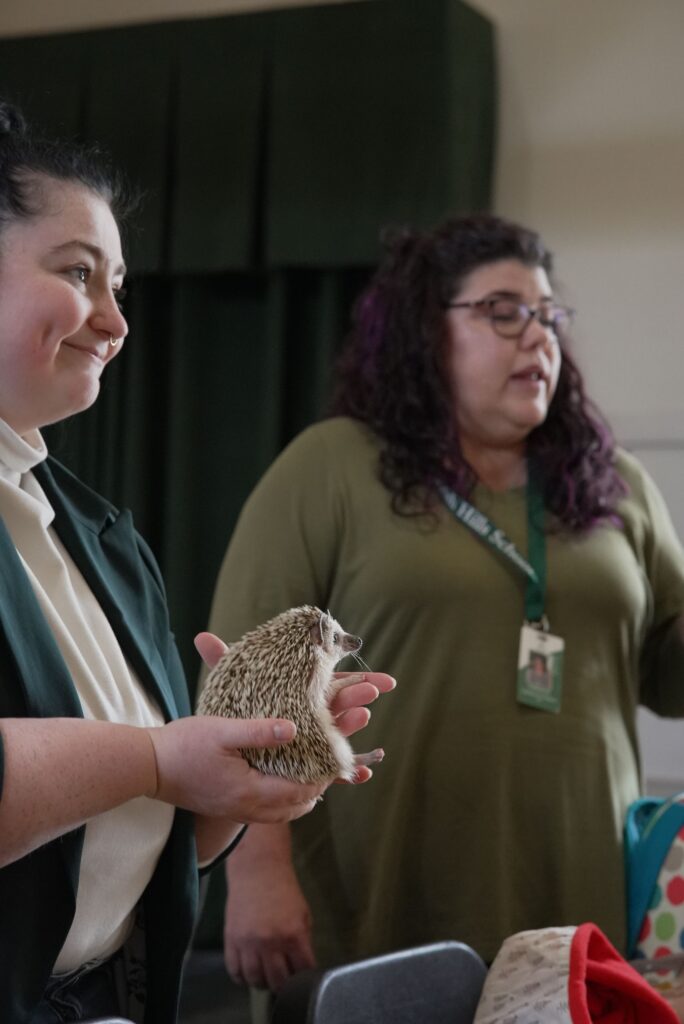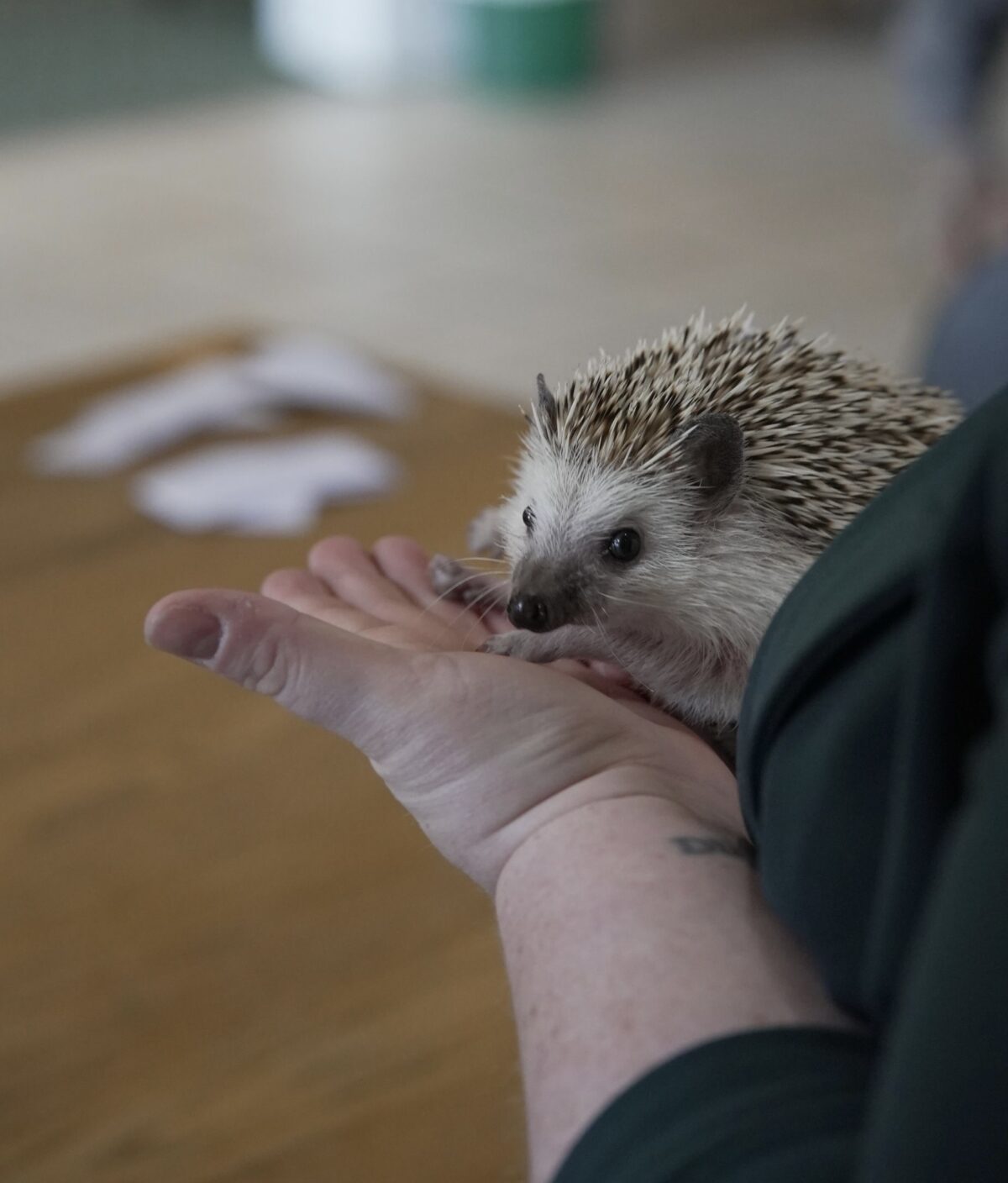I got to see an old friend on Friday.
It had been years since we had seen each other and I wasn’t totally sure she would recognize me, but the elderly hedgehog wrapped gingerly in a flannel blanket immediately crawled out of her hiding place and into my hands the afternoon of Feb. 2.
Maisy, the five-ish-year-old African pygmy hedgehog, lived with me for a couple of years when she was much younger. People don’t think of hedgehogs as cuddly creatures, but that prickly baby slept in my shirt pockets and snuggled on the couch with me when the world turned upside down during the early days of the COVID-19 pandemic.
When I relocated to a region of Alaska where owning a hedgehog was illegal, Maisy couldn’t come with me — not that she would want to, as hedgehogs require warm temperatures to survive. She moved in with Catherine Cameron-Pazera, who shared videos of Maisy playing with toys and running around in the grass with me via social media.
Cameron-Pazera invited me to Welsh Hills School in Granville on Friday, Feb. 2 — Groundhog Day — to see Maisy while she visited the students for Imbolc, a traditional Gaelic festival marking the beginning of spring. Cameron-Pazera teaches at the school, and likes to share details about the often agriculture-related traditions that inspired ours.
Maisy is key to the beginning of spring celebrations at Welsh Hills, which requires a hedgehog for a shadow-observing ceremony a la Punxsutawney Phil. In ancient Rome, citizens used hedgehogs to predict the arrival of warmer weather. According to tradition, hedgehogs would emerge from their burrows to evaluate the weather. If they return to their burrow, it means an extended spell of bad weather is coming.
Over the centuries, that tradition has morphed into our modern Groundhog Day, where Punxsutawney Phil looks for his shadow on the morning of Feb. 2. If he sees it, we’ll have six more weeks of winter. If he doesn’t, we’re in for an early spring.



Coincidentally, Phil didn’t see his shadow Friday morning, but Maisy did try to immediately hide in her blankets, so place your bets now on which magic prognosticator is right.
Maisy has been predicting the weather at Welsh Hills School for two years, and in her elderly state, this is likely the last time she’ll do so.
The students were, of course, in awe of the little old lady, and the room echoed with oohs and aahs while Cameron-Pazera showed her off.
At the end of the Imbolc lesson, Cameron-Pazera brought Maisy back to see me before safely stowing her in a fleece-lined travel bed, and though my little friend wobbles a bit more than she did as a baby, seeing her brought tears to my eyes.
This story was updated to include additional details about the use of hedgehogs to predict the weather.
Have a bright spot to share? Send it to Managing Editor Julia Lerner (lernerj@denison.edu). Tell us about the moment that made you smile in under 200 words, and try to include a photograph

